
In 2015, a collection of 36 drawings by Dorothy Wall (1894–1942) – beloved children’s book author and illustrator of the mischievous fictional koala Blinky Bill – were acquired with the assistance of the State Library Victoria Foundation. The drawings came from the private collection of Dorothy’s family and included hand-painted illustrations, designs, and sketches, depicting the adventures of Blinky and friends. Several of the drawings have come to the Conservation Lab for assessment and treatment, presenting a unique opportunity to study these works up-close.
The Library is home to one of Australia’s most significant collections of children’s literature and illustrations – including books from the Blinky Bill series. Dorothy’s original drawings complement our existing collection and give researchers and readers an intimate look into her work and the world of Blinky Bill.
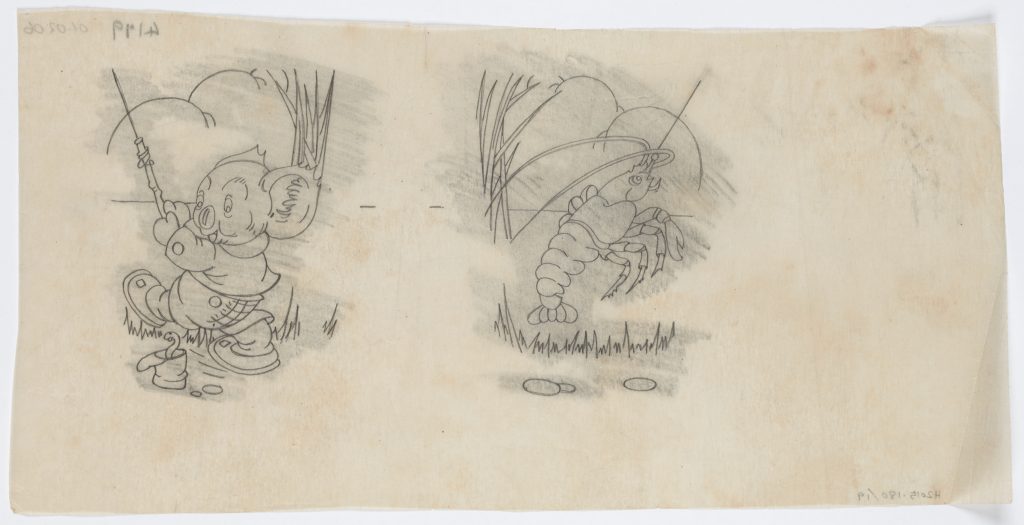
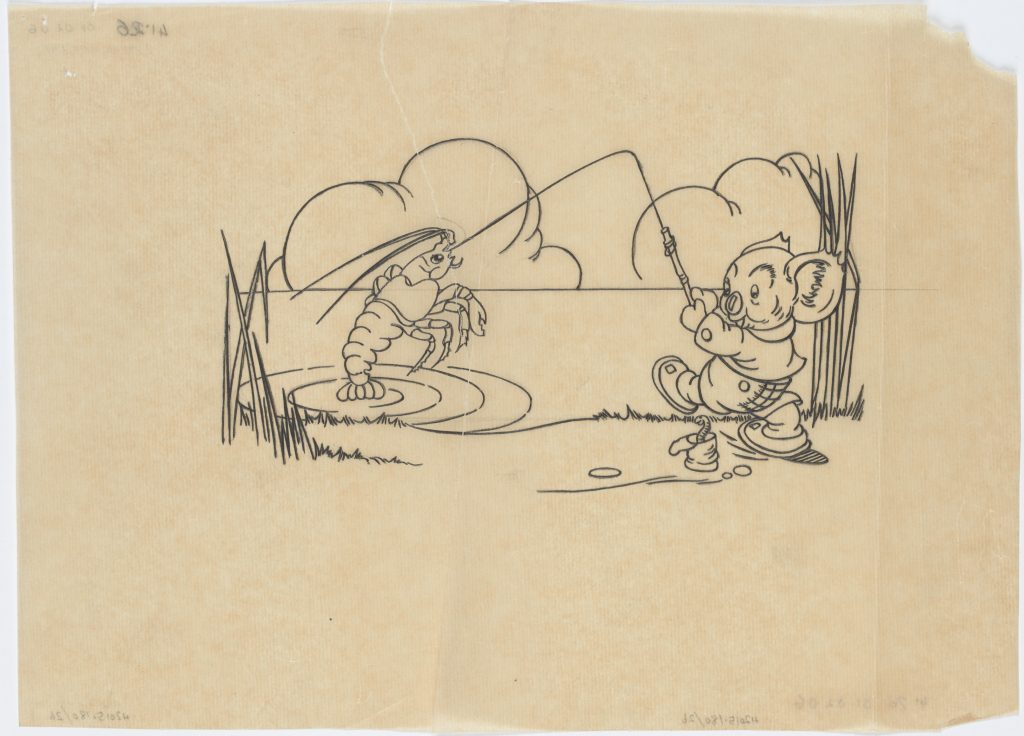
Biography
Dorothy was born on 12 January 1894 in Wellington, New Zealand. Showing artistic talent early in life, she won a scholarship to study at the Christchurch School of Art in 1906, at just 12 years of age. A year later when the family returned to Wellington, Dorothy continued her training at Wellington Technical College, where she went on to complete her studies.
In 1914 Dorothy moved to Sydney, where she began to earn a living as a freelance artist doing illustrations for catalogues, newspapers, and magazines. She published her first children’s book, Tommy Bear and the zookies, in 1920. The following year, she provided the illustrations to JJ Hall’s The crystal bowl: Australian nature stories, winning her recognition as an illustrator of children’s books. Dorothy married Andrew Delfosse Badgery in 1921, and their only child, Peter, was born in 1925.

Dorothy is perhaps best known for her book Blinky Bill, the quaint little Australian, published in 1933. Despite its success, Dorothy struggled to establish herself professionally and continued to take on additional work by doing commercial illustration. After her divorce in 1934, and with her health deteriorating, Dorothy returned to New Zealand in 1937.
She became an illustrator for local newspapers, and was financially secure for the first time in her life. Despite her success, she increasingly missed the landscape and sunshine of Australia. When her health improved, she resigned her job and returned to Sydney in 1941. Sadly, six months later she died of pneumonia on 21 January 1942, at the age of 48.
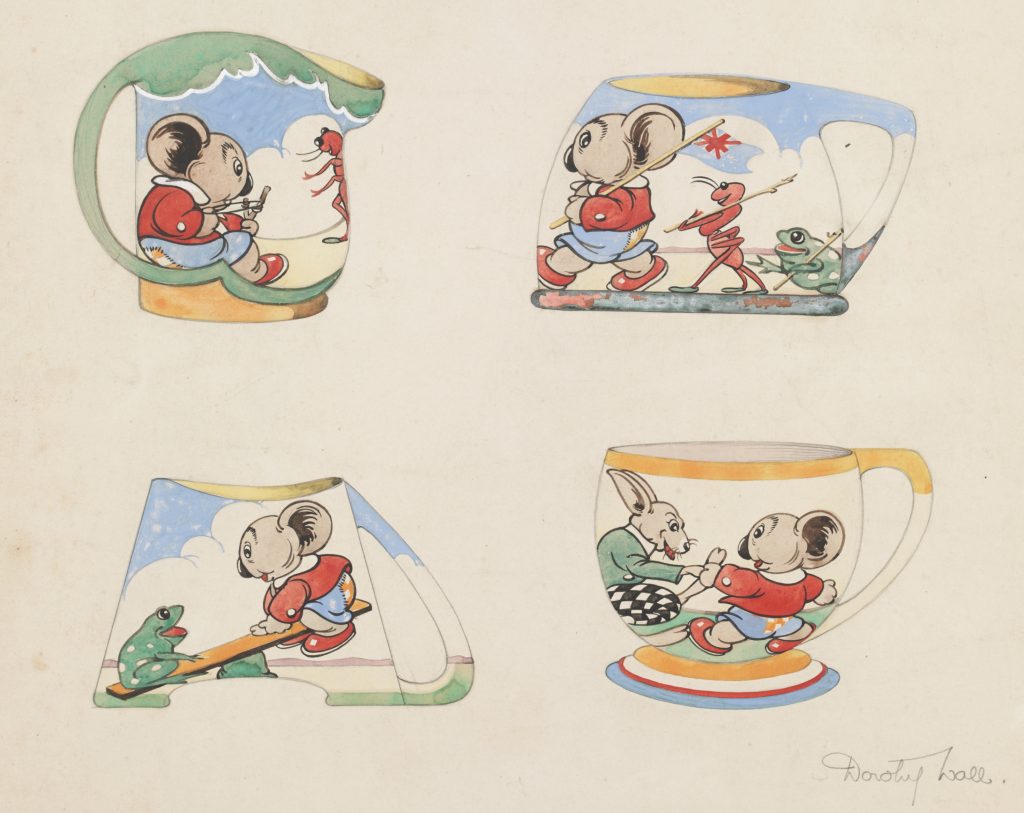
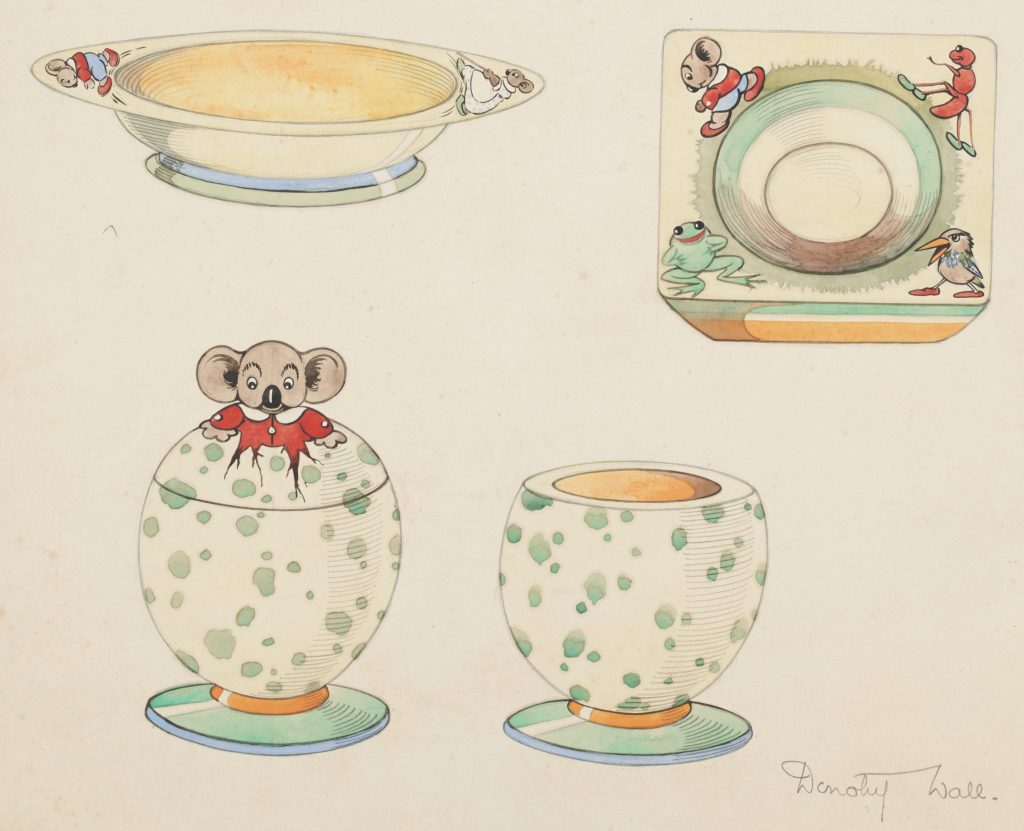
In her short lifetime, Dorothy wrote and illustrated 13 books, six being about Blinky. She also illustrated books by other authors and hundreds of drawings for newspapers and magazines. The complete adventures of Blinky Bill (1939) has become an Australian children’s classic and has never been out of print. Generations of children have grown up enjoying Dorothy’s enduring stories through her books, as well as the animated television series The Adventures of Blinky Bill (1993-2004).

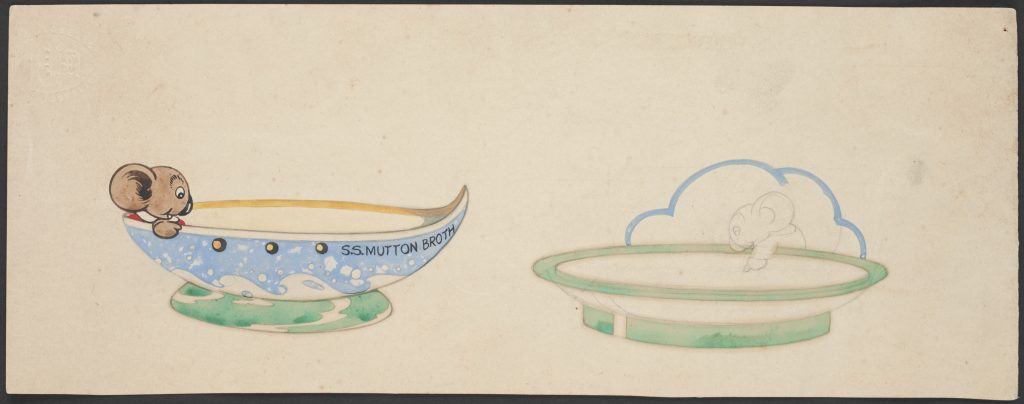
The Collection
The Library collection features exquisite, coloured designs for the Blinky Bill series, as well as Dorothy’s commercial work for newspapers and magazines. A large proportion of the collection is dedicated to her design work.
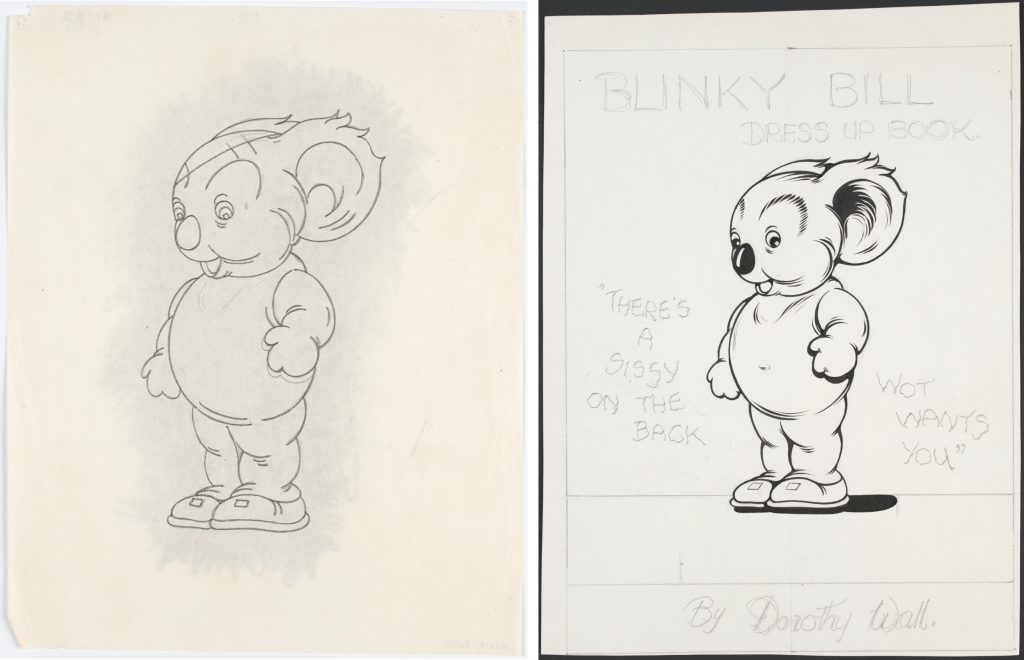
Throughout her career, Dorothy designed many products featuring Blinky to be manufactured as merchandise. They range from everyday items like stationery, handkerchiefs, watering cans, babies’ bibs and toys to crockery, balloons featuring Blinky’s face, a moneybox Splodge, and even a Blinky Bill catapult. A few of these designs went into production, including a Blinky Bill dress-up book (1942), of which several preparatory drawings are included in our collection.

Conservation treatment
It was the deteriorated tracing paper that caught our attention when the drawings came to the Conservation Lab. The papers were very brittle, discoloured, and torn. Early 20th century tracing papers were often made from poor-quality fibres that were saturated with natural oils and resins to make them transparent. Over time, the papers have naturally deteriorated.

Tracing papers were often used by Dorothy to sketch out her designs. The translucency of the papers allowed her to copy drawings and redraw and overlay different design options. This feature was invaluable during the design process, since it allowed her to make different versions of the same design easily. It is interesting to compare these sketches, as they reveal the development of her artistic process.

Before the drawings can be digitised, we need to repair any tears so they can be handled safely without risk of further damage. Repairs are usually made on the back of the paper, so that mends remain unseen. With tracing papers, this can be difficult due to the translucency of the paper. By modifying our usual repair techniques, we can create mends that are invisible, even when viewed from the front of the drawing.
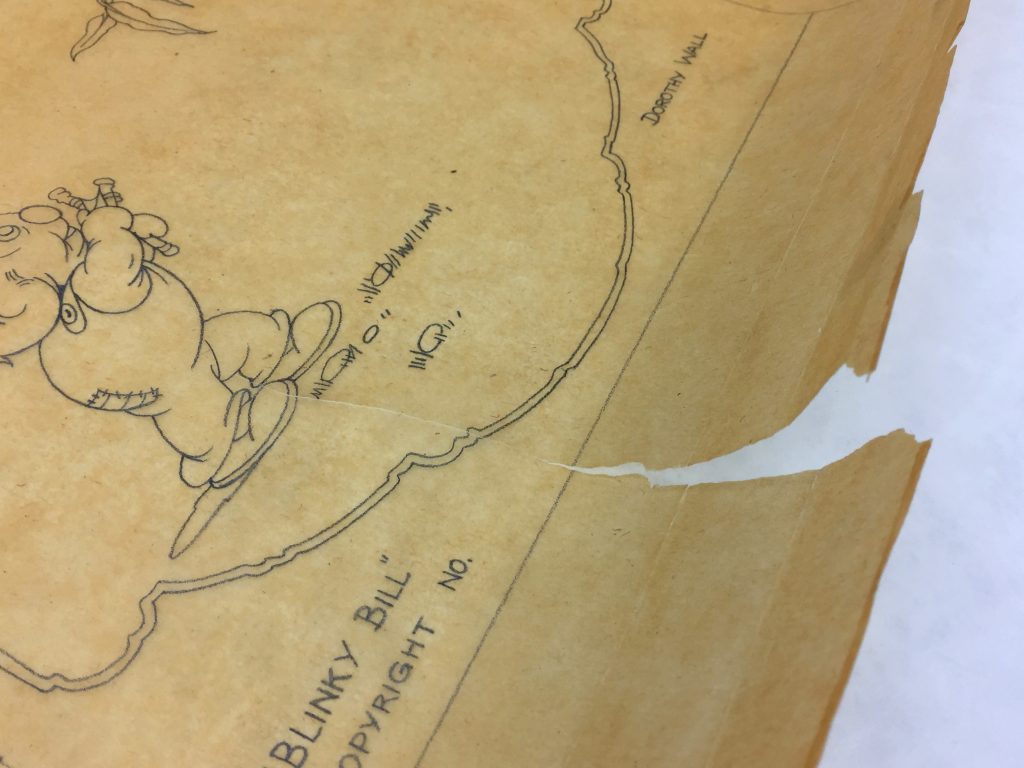
The choice of adhesive is critical to making a good repair. We plan to use isinglass, an adhesive produced from the bladder of the sturgeon fish. Isinglass is well known for its good ageing properties and ability to provide an effective bond on tracing paper. Adhesives, like isinglass, that have been tested, are non-toxic and reversible are preferred in conservation work. We like to be able to reverse our treatments if necessary.
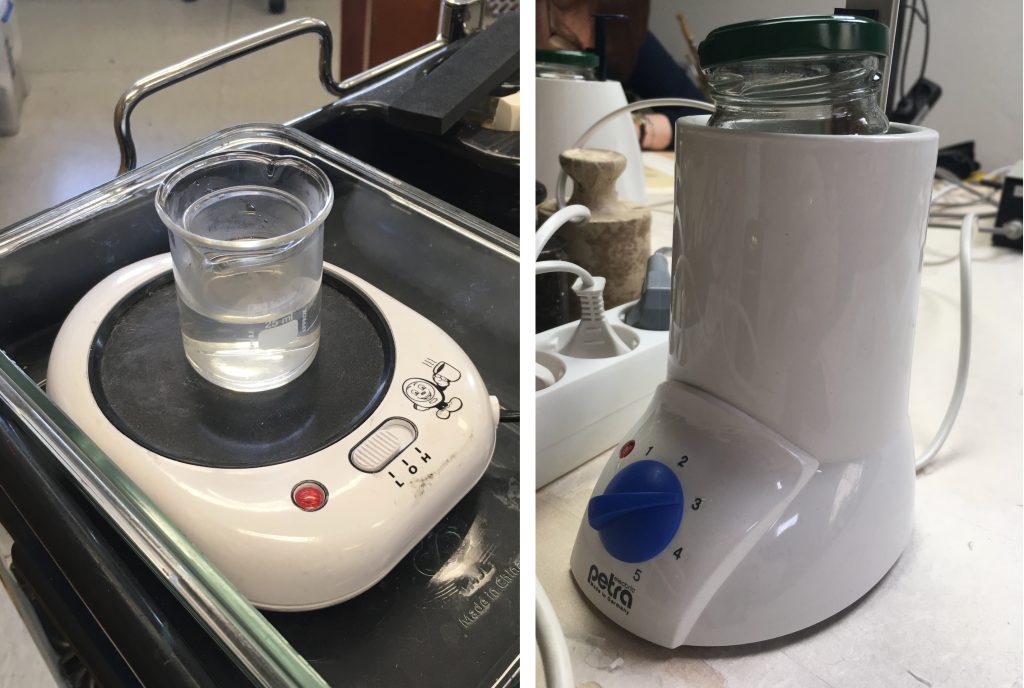
Note: Some of the drawings featured in this blog are currently in the Conservation Lab awaiting treatment. When completed they will be digitised and made available on our catalogue.
References
Laroque, C 2004, ‘History and analysis of transparent papers’, The Paper Conservator, vol. 28, no. 1, pp. 17-32.
Kerr, J & Callaway, A 1995, Dorothy Wall, Design & Art Australia Online, viewed 7 Oct 2020, <https://www.daao.org.au/bio/dorothy-wall/biography/>.
Langmore, D 1990, Wall, Dorothy (1894–1942), Australian Dictionary of Biography, viewed 7 Oct 2020, <http://adb.anu.edu.au/biography/wall-dorothy-8959>.
Further information
The Library has a detailed research guide on children’s literature

